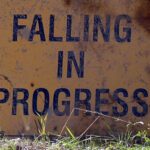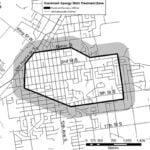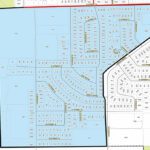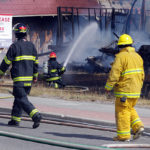Home »

US senators ask B.C. to clean-up mine water pollution
Wildsight June 14 pointed out “all eight US senators representing B.C.’s neighbouring states (Washington, Idaho, Montana and Alaska) have joined together in an unprecedented bipartisan effort to press Premier John Horgan to clean up mine water pollution flowing across the border.”
The senators’ letter— which highlights long-term water pollution flowing into Montana from the Elk Valley coal mines—underscores the recent call for B.C. mining law reform from a coalition of 33 Canadian environmental organizations, Wildsight noted in a media release, adding, the weakness of B.C.’s mining and related environmental laws were highlighted by the senators in their efforts to protect shared rivers from long-term water pollution from mines in B.C..
“B.C.’s archaic mining laws are still rooted in a wild west mentality,” said Calvin Sandborn, legal director of the Environmental Law Centre at the University of Victoria. “B.C. law makes it far too easy for mines to extract resources now, while leaving the clean-up to future generations and that puts rivers across the province, including many that flow into the US, at risk of long-term ecological disaster.”
Key issues highlighted by the senators include the lack of transparent, open data collection on water pollution and its impacts, the lack of binding water pollution limits, and B.C.’s unwillingness to fully address water pollution issues collaboratively. The senators’ letter is just the latest US action asking B.C. to clean up mining pollution in shared rivers.
Such calls have been echoed by tribes and First Nations on every border, members of the U.S. House, the governors of Washington, Montana and Alaska, state legislators, municipalities, and others. Earlier this year, reacting to the lack of open data, U.S. federal lawmakers allocated US $1.8 million to monitor water quality in these four states’ transboundary rivers.
“We know we have a tremendous problem with contamination flowing from B.C.’s mining sector,” said Robyn Allan, former President and CEO of the Insurance Corporation of British Columbia. “B.C.’s own Auditor General has chided the province for our lax rules and lack of enforcement. We absolutely need to ensure British Columbia’s taxpayers don’t end up paying for industry shortfalls and to bring British Columbia’s mining practices into the 21st century, both for Canadians and for the U.S. citizens living downstream.”

After nearly four years, a B.C.-Montana process to set a shared pollution limit for Lake Koocanusa still hasn’t come to an agreement, while selenium levels have risen above both B.C. and the U.S. Environmental Protection Agency’s thresholds to protect fish from the reproduction disrupting effects.
“While the U.S. Endangered Species Act should protect bull trout in Lake Koocanusa and the rare white sturgeon downstream, because B.C. still doesn’t have any endangered species legislation, fish and other wildlife don’t have comparable protection here in B.C.” said Lars Sander-Green of Wildsight. “Endangered species legislation was an election promise from the NDP, but we’re still waiting.”
The US senators also highlight that these water pollution issues haven’t been dealt with through the long-standing Boundary Waters Treaty, which prohibits pollution of shared rivers. While delays in appointing commissioners to the International Joint Commission, set up to resolve disputes under the Treaty, have recently left the body unable to take action, appointments made in May 2019 now allow the Commission to continue their work.
“One big problem we have in B.C. is a very weak bonding system to make sure mines pay for clean-up,” said Sander-Green. “The amounts that mining companies have to provide in bonds are often wildly insufficient to deal with long-term water pollution problems—and that puts everything downstream at risk, on both sides of the border.”
The weakness of B.C.’s system stands in comparison to Alaska, where full reclamation bonding is required up front. In Alaska, Teck Resources has provided a bond for a single mine that is equal to 40% of the total bonds held for all mines by the Province of British Columbia.
Pollution from B.C. mines isn’t just a problem on the border with Montana, Wildsight pointed out.
In B.C.’s northwest, acid mine drainage from the long-closed Tulsequah Chief mine has been flowing for more than 60 years into the transboundary Taku River, one of the region’s most productive for salmon, while new proposed mines would also send pollution downstream to Alaska.
Recently, B.C. opened a permit process for controversial mine exploration from Imperial Metals in the Manning Park donut hole in the headwaters of the Skagit River, which flows into Washington state through North Cascades National Park.
The rights of First Nations communities downstream of mines on both sides of the border is a growing issue. Recently 15 of Southeast Alaska’s 19 federally recognized tribes filed a human rights petition about upstream mine pollution from B.C.
The Ktunaxa Nation, on both sides of the border, recently urged both governments to lower the selenium pollution limit in Lake Koocanusa to 1.5ug/L, because testing of fish in the reservoir shows that dangerous levels of the pollutant are building up in their flesh and reproductive systems.
“U.S. concerns about water pollution flowing across the border have to be a wake up call for B.C.,” said Sander-Green. “Pollution levels at the border are too high, but pollution upstream in B.C. is even worse. Premier John Horgan needs to step up to deal with mine water pollution immediately. If we want clean water and healthy fish in this province, we need major reforms to our mining laws.”
B.C.’s First Nations Mining and Energy Council has just released a detailed report on the problems with B.C.’s reclamation bonding system.
In recent years Teck has been addressing the selenium issue through ongoing improvements to water treatment facilities.
Lead image: Elk Valley coal mines. Photo credit: Garth Lenz, ILCP







